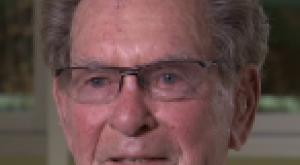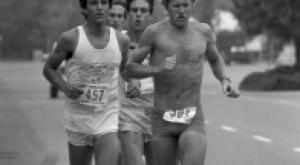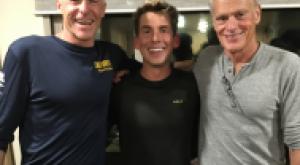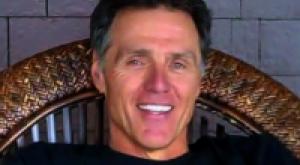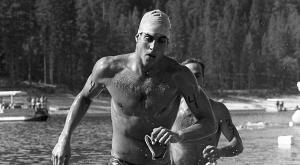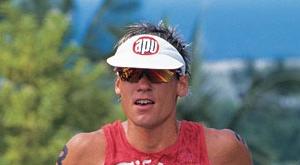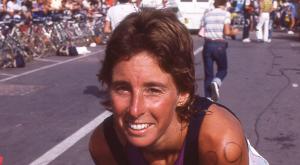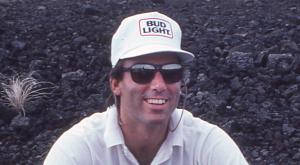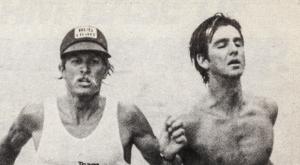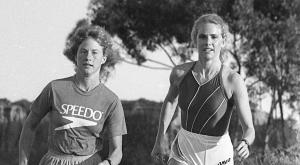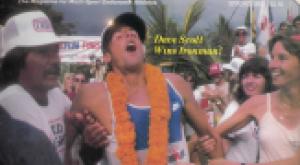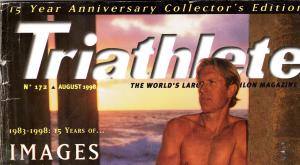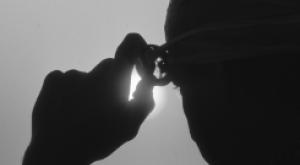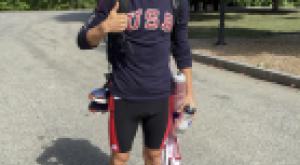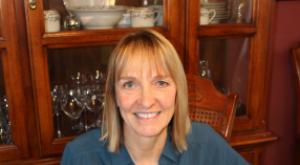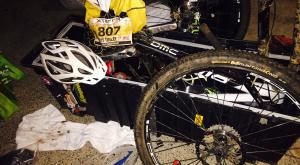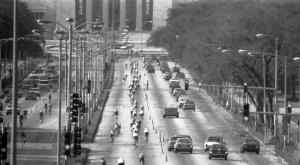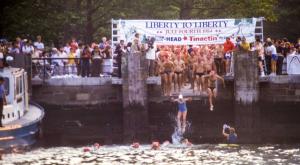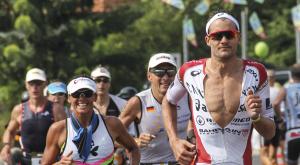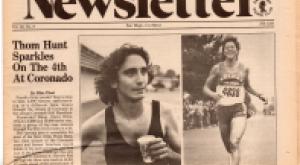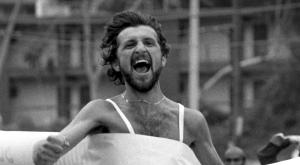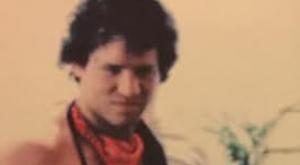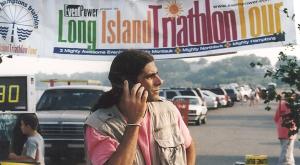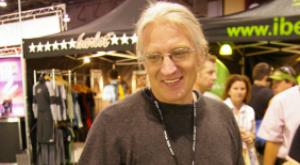
By the end of the 1980's, triathlon had established itself as a full-fledged sport. There were athletes making a living from it, companies were developing products to support it, and best of all if you happened to be sitting next to a stranger on an airplane and you started up a conversation with them you didn't have to explain what an Ironman was anymore. They had either done one themselves or at least knew someone who had done one. Ironman had its sanctified place on worldwide television every fall, and races were taking place in just about every corner of the globe where there were at least a few months of summer, a body of open water and a few roads to cycle on.
But there was one thing missing. Unlike all three of the individual sports that make up a triathlon, the sport itself did not have Olympic heroes. There were champions, but no gold medalists, in our halls of fame. We lacked that last bit of credibility that would round out the triathlon calling card. Unfortunately, getting a new sport into the Olympic program is not just a matter of showing up at the IOC office and saying, "Here we are! And we are SO cool you MUST have us on the sport roster for the next Games!"
Having triathlons go from something we all thought was an incredible sport to actually having the IOC agree with us was a long and cumbersome process. The first step was to get the IOC to actually recognize us as a sport. It's not just good enough to be a great sport. The IOC has to tell you that you are. And to do that a sport has to be administered by a body that is not part of any nation-state's government.
So, in that pursuit, on April 1st of 1989 the first ITU Congress was convened in Avignon, France to satisfy the first significant requirement to get into the Olympics. This was a huge departure from where the sport had incubated. The sport itself was rogue by nature, born out of sport rebels who didn't want to conform to what was standard, born out of the false but mythologized tale of drunken bets about who was the best athlete. Getting into the Olympics was going to have to be formatted and formulated. But why not? Racing is ultimately racing, and if a great race could take place on the Olympic stage, it would be another venue to answer who was best and which athlete was going to rise up regardless of the circumstances.
Next step in the progression is that a sport will gain International Sports Federation status. When that happens the sport has to overlay IOC rules to continue to conform to rigid Olympic structures (like anti-doping, conduct requirements, etc.) It's all part of getting groomed and uniformed enough to be presentable in front of the IOC royalty.
From there, as long as a sport's International Governing Body (IGB) is operating by IOC standards, it can then petition to become part of the Olympic Games. There were more than a few criteria that a sport needs to meet to gain that acceptance, things like being practiced in at least 75 countries for a men's sport on four continents and 40 countries for a women's sport on three continents.
Lots of protocol needs to be followed and none of it happens fast. Some of the necessary Olympic pieces for triathlon's inclusion had been developing in the mid 1980's. Then in 1989 a hugely significant cog would be engaged. It was to be the first ever ITU Olympic Distance World Championships. We needed to show the IOC that we could run a world-class World Championship event with an international contingent of national teams entering their allotted number of athletes. This meant qualifying for a race rather than sending in your application with a check.
Preparing For the Big Race
In the USA, there were going to be several early summer races that would serve as qualifying events where you could be selected to the US team that would compete in the inaugural World Championships in August in Avignon, France. The first race was in Dallas. I was there. Everyone was there! It was a peculiar type of race pressure. Every other race I had competed in at the time was a day in and of itself. This was the first event where your race finish dictated what you would do at another race in the future. Do well and you were on the team. Have an off day and you paid the price with another trip to another race to try to make the squad. Fortunately for me I solidified my spot for Avignon with a win. But this was a US race. Avignon on August 6, 1989 would be a worldwide affair with athletes not only racing for themselves, but for the first time representing their countries. Nothing like a little national pride to elevate the game.
Avignon is ancient. In the 13th century seven Roman Catholic popes called it home. The old walls surrounding their domain still stand. Running just next to this historic bastion is the Rhône River. The 1.5-kilometer World Championship swim would take place there. The US team arrived several days in advance of the event to hopefully relieve some of the jetlag before race day. I went down to where the finish was going to be several days before history would take place and the entire section of street was completely closed off. The grandstands had already been put in place and the finish line constructed. Never had I seen that happen in a race before. Just seeing the reverence being given to the upcoming event with the end goal already in place gave it an air of something outstanding about to take place, something that was going to be a first, something that would be historic.
An Odd and Abysmal Start
The Rhône is a natural river but its flow is regulated. The actual swim length was to be extended to compensate for the speed of the water. A true 1,500m swim would likely get us out of the swim in under ten-minutes. But as we would learn on race day, there had been two plans concocted. One was the first option -- lengthen the swim to compensate for the help the river flow would give us. The other was to have the swim be exactly 1.5-kilometers but to close the locks upstream to snuff the river's flow to a snail's pace on race day. Those marking the swim length did so based on the river's normal flow rate. However, the crew in charge of the locks didn't get the memo and they closed the flow.
The end result was an abysmally long swim. It took me over 28-minutes to go from the historic swim start to the less than epic swim exit. I was almost 2-minutes off the lead of Rick Wells and Glenn Cook, and close to a minute behind a huge pack of potential champions who took great advantage of a swim that was at least 10-minutes long. Their names may not mean a lot to those of you who are new to the sport, but they represented some intimidating characters that you never wanted to give a lead to coming out of the water. Fresh water favors those who are natural swimmers, especially when the swim drags on over ten-minutes longer than it should.
The first part of the bike wasn't going any better for me. There was a large group ahead and around me including Rob Barel, Miles Stewart and Brooks Clark (one of the two men joining me from the US in the race). Some easily pulled away from me, none lost time to me in the opening miles. I was very, very close to giving up on the day. It was one of those critical personal pivotal points where you ask yourself if you have what it takes. No rhythm had happened in the water, and none was happening on the bike. With the time I was losing, no miracle on the run would be enough to capture a top three finish, and likely it was looking like top ten was going to be a very tall order.
Mike Pigg Saves The Day
Fortunately, one athlete who had come out of the water seconds behind me found his rhythm on the bike and started to slide past me. It was Mike Pigg, the other American man on the team. It gave me hope. Pigg was dynamite on the bike in the Olympic distance. I can't remember any race where I pulled away from him. It was usually the other way around. He knew how to use the bike to close gaps opened during the swim. It was a sure bet he would do that on this day as well. I grasped the first moment of strength. Just try to follow Mike's pace on the bike for as long as you can and maybe you will be able to pull back at least some of the time that's been lost.
That became my only focus. The run would come soon enough. I just locked my sites on Mike charging through the field. It turns out he had started the bike right behind me. Perhaps he was waiting for me to make the upward climb during the opening miles of the bike. But clearly I wasn't capable early on so he took the reins and upped the pace. Guys fell off. More got passed.
Eventually the transition area came into sight. Only a handful of athletes were still out in front. Mike Pigg had once again harnessed his cycling strength and cut the difference on the lead to a gap that held some hope of being a factor at the finish line. But rhythm was still a necessity. You don't close minutes on world-class athletes if you are having an off-day. It takes your best, especially on a day that would mark a significant milestone being put in place on the path to the Olympics.
Information was sparse on the course. I had no real idea how many guys were ahead. I was being told there were only about two or three in front of me, which seemed impossible. I was in the middle of the field coming out of the water. What happened to those numbers? Could I really be that close to making the podium! The run was circuitous with no long stretches to see those ahead. But I was passing people, one then another. Then the site of the lead vehicle appeared ahead. One more pass and no one would stand between me and the finish line I had seen a few days earlier.
I made the pass on Rick Wells and then the only thing left was the distance. There's no room to relax in an Olympic distance race, though. You only have one option, and that's to push to the limit every step until the bleachers are in sight packed with those cheering you in. I'd had immensely good luck racing in France. By 1989 I had won the Nice International Triathlon six times. But this one would stand in a category all its own. There would be only one first-ever ITU Olympic Distance World Champion. Erin Baker would receive that crown for the women. I'd wear that honor for the men.
The awards ceremony was held at the Palais des Papes, the place where six papal conclaves were held in the 1300's. It was also the place where the first Olympic World Champions were to be crowned in 1989. Rick Wells of New Zealand, who finished third, was brought up first. Glenn Cook second overall from Great Britain was announced next. Then my name was called. I spoke in English. I spoke in French. I stood flanked by two of the greats of the time. We all stood silent as the American national anthem was played. It was a first for me to be a part of an event that represented not only me but also the possibility for the future of the sport.
The First Step Pays Off
That race in Avignon took place 11 years after the most public kickoff of triathlons occurred in 1978 on the Island of Oahu in the race that would be called Ironman. It would take another 11 years before triathlon actually debuted in the Olympic Game in Sydney, Australia.
What took place during that decade plus one was driven by Les McDonald, the then ITU President. He initiated and produced the first ever IU Congress in the spring of 1989. He greased and appeased the IOC wheels at whatever speed they needed turning with one ultimate objective: get triathlon into the Olympics. Some argued during those years that the ITU wasn't doing enough to grow all parts of the sport, that getting Olympic status was the only thing that got its attention. But the birth of something new is rarely an easy process. It requires a dedicated focus. Avignon and the first ever ITU World Championships that took place 25 years ago was one of those significant focused moments.

